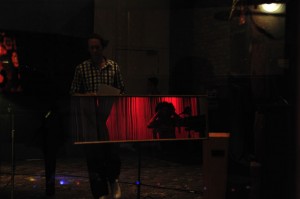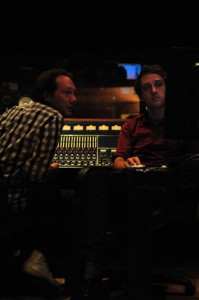The Latin Soul can be bought and delivered within New Zealand by just
emailing us through this website! –Click Here
iTunes New Zealand:
https://itunes.apple.com/nz/album/ven/id527870613?i=527870769&ign-mpt=uo%3D4
iTunes USA
https://itunes.apple.com/us/album/the-latin-soul/id529312159
iTunes France:
https://itunes.apple.com/fr/artist/jennifer-zea/id482476682
THE JOURNEY OF THE LATIN SOUL
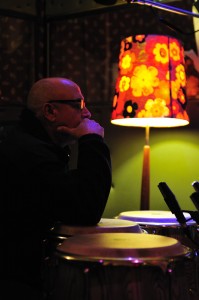 2009 – A tarot reading reveals 13 songs. The exact reading, which has served as frame for many different works and collaborations with other artist, this was a compilation of many ideas and themes of what I could deliver or talk about in the songs. It was the first step into making this album, the conclusion of a magical experience that made me look into myself in order to create what is in front of you now, The Latin Soul.
2009 – A tarot reading reveals 13 songs. The exact reading, which has served as frame for many different works and collaborations with other artist, this was a compilation of many ideas and themes of what I could deliver or talk about in the songs. It was the first step into making this album, the conclusion of a magical experience that made me look into myself in order to create what is in front of you now, The Latin Soul.
By that time I worked steadily with Kevin field and Miguel Fuentes.
The first time Miguel and I worked together we knew it was a match for doing what we most liked, music from our side of the world, from the place we were born.
In 2010, I decided we had to put our work in a recording and so we rehearsed often at the university, the School of Jazz where Kevin teaches. The first song was Candelaria it came to me as I was driving home one afternoon, music, lyric and all, to sing the melodies to Kevin was quite rewarding as he could understand what the songs wanted to be, it was from the very beginning, all about a dialogue between piano, congas and voice.
The other songs took some more working as they developed and were brought in at every rehearsal, like Ven, that was translated into French, and then back to Spanish for it’s final take. This song came to life after we could hear the full horn arrangements, Mike Booth did an excellent job reproducing some of the original phrases I had imagined and sang for this, then with his solos he completed this song’s traditional character. We chose for it to be a Son, because it seemed a more natural feel that people from many parts of the world could identify as Latin Rhythm, I looked for a familiar connection, an inviting one to introduce this work.
Another song that was with us from the very beginning was Stevie wonder’s Moon Blue. Kevin brought this song for me to sing in Spanish a part of it, for another singer who was recording it. Eventually, the other singer dropped this song from her recording plans, but I thought this song was amazing; I translated the whole tune into Spanish and played it many times like this, in salsa style. But as we worked with producer Nathan Haines, he decided it would be important to keep it in English, I am quite grateful for this decision, it was also a challenge to record it in English for Stevie Wonder’s phrasing is complex, I was a handful for Nathan in the recording of the voice here, but he got the best of me, doing an amazing job producing this particular track.
The song To Love existed as a love letter I wrote years ago. Being the original text 2 pages long, extracting the main idea was fun to do, it came quite easy. As Kevin put the music first, the lyrics where a perfect match in the rehearsals. Another peculiar thing about it is I am singing it as a Bolero, for the original arrangement were bongos instead of drums. Bongos drove this song by themselves, when replacing them, it gave a complete, new vibe to a Spanish sang track, a true Latin soul song.
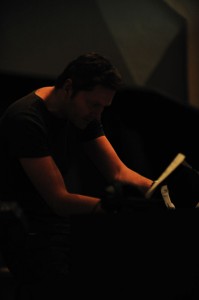 But older then all of these was Boulevard, a song that stems out of a poem I wrote to a memorable place in Sabana Grande, a boulevard in the heart of Caracas where students, musicians and the working class would start the afternoon and finish the night, a hot place for dance and sensual experiences and awesome big bands that would play the Fania classics and their own. It is a place long gone that still makes me dream and long for – El O’Gran Sol was just like any bar in Latin America, reflecting every night what la raza Latina is like. Nothing better than to get Venezuelan jazz maestro Alfredo Naranjo on board for the arrangements of this song, a feel from home combined with the masterful flute playing of Nathan Haines make this song a complete and round piece.
But older then all of these was Boulevard, a song that stems out of a poem I wrote to a memorable place in Sabana Grande, a boulevard in the heart of Caracas where students, musicians and the working class would start the afternoon and finish the night, a hot place for dance and sensual experiences and awesome big bands that would play the Fania classics and their own. It is a place long gone that still makes me dream and long for – El O’Gran Sol was just like any bar in Latin America, reflecting every night what la raza Latina is like. Nothing better than to get Venezuelan jazz maestro Alfredo Naranjo on board for the arrangements of this song, a feel from home combined with the masterful flute playing of Nathan Haines make this song a complete and round piece.
I wrote Mi Niña for my daughter Obaya. “Nanas” or lullabies are a common theme in the Latin-American culture, specially coming from our African background. And in the surprise of finding my daughter more of indigenous background then black, for I am considered more of black heritage where I come from. I realized the wonder of our race, of being mixed in Latin America and so I call my baby “indiecita” – “little indian girl”, to honor the indigenous beauty she is and that we all have inside as Latinos. This is such a delicate song, the treatment New Zealand’s Jazz leyend Kim Patterson gives to the horn is of beautiful warmth – It was a difficult choise between the 2 takes the gave us: One with the flugelhorn and the one we kept with his exceptional touch a trumpet that is half way trumpet, half way flugelhorn.
Satélite plays on one of my favorite songs of all time: Satelite sang by “Maelo” Ismael Rivera, he was one of the greatest salsa singers of all times. In his song, Maelo is giving a political statement on how “Satélite” (Puerto Rico) had been ignored by “Control” (The U.S.A). I prefer to see Satélite as a song of awareness, put it coming from outside or from inside, it’s trying very hard to connect with out response, and so it is a cry to put ears into the message – what is your message? And what message are you playing out? This song was also a great opportunity to celebrate the Ska I like, going back to the times when I played with Venezuelan band Desorden Publico. Waoo back in the day…! Guitar by Roy Venkataraman (former member of Bob Marley’s The Wailers) and off voice from Imon Starr complete the feel of this song.
For a very long time I had been trying to incorporate folklore into my work, this was an ideal setting. Santos is inspired in the verses sang to Saint Juan in the summer solstice, it’s an example of the syncretism of Catholicism and Pagan believes in the Venezuelan culture. The saint is taken from the house of the family who for generations has taken care of him, then to church and then paraded in the streets drums and chants give company to the Saint, he is taken after to the house where there is an altar, the owners of the house dress him and prepare him for the continuing celebration, also singing improvised verses dedicated and inspired by him. Depending on the region where the celebration takes place, the saint is taken to the sea to encounter the drums played to his name, the population purify themselves by bathing in the rivers beliving in the magical powers these waters have on the saint’s day.
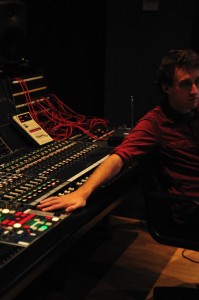 Clavelito Colorado is an extract of a song from one of our most iconic representatives of Venezuelan folklore, Simon Diaz has sang the most traditional “cantos de trabajo” – working songs – and has helped preserve the culture coming from our farming lands. As in Santos, the frame music of hoe playing (the agricultural tool) and Cuban chequeres invite other traditional elements in the search of profoundness and Caribbean syncretism.
Clavelito Colorado is an extract of a song from one of our most iconic representatives of Venezuelan folklore, Simon Diaz has sang the most traditional “cantos de trabajo” – working songs – and has helped preserve the culture coming from our farming lands. As in Santos, the frame music of hoe playing (the agricultural tool) and Cuban chequeres invite other traditional elements in the search of profoundness and Caribbean syncretism.
Vacila and Conscious Rhythms were songs that met their final structure as they were rehearsed with Nathan and then recorded and mixed, mostly for Conscious Rhythms, it took some listening to the first recording to come last minute with a proper solution to the presence of the beat and the easiness of the melody which was changed several times. Nathan’s help was crucial producing and then suggesting Kevin trail’s voice together with mine in this tune. We wanted and easy going tune with accented beat. In Vacila’s case, the song had already its character and knew what was going to be from the beginning, a groovy cha-cha-cha, and a response if you’d like, to Ray Barreto’s “Vive y Vacila”.
The recording of these songs happened somewhere around May 2011, it was the moment when all of the main participants could be gathered in the studio to do a live recording in separated booths for percussion (congas), voice, piano and base.
Percussion as timbale, charrasca, chequeres, bell and other elements fundamental to the Latin feel followed, all recorded by master percussionist Miguel Fuentes, 3 days for 11 songs, followed by 2 days of horns recording, 1 day drums and some added vocals and extras done at York Street Studio and Nathan Haines’ studio as well. Then, 6 days for mixing and a whole day for the mastering for the entire album at York Street studios. One of the key aspects of these recordings is Sound engineer Simon Gooding who studied the sound required for this album, with the help of references as Cachaito Lopez’s, Buika’s and Barreto’s albums, he knew exactly were each instrument should sit among the diversity of sounds, and how the percussion, which makes Latin music what it is, would have it’s core classic sound.
Juan Jose and Gato Negro where created from the experience of working with Pianist and arranger Jonathan Crayford. These are the only 2 songs recorded at Revolver Studios, all the way out in Waipu, one-hour distance from Auckland. We had rehearsed a whole week and the idea of recording together came as we prepared for Jonathan Crayford’s concert at Hopetown Alpha on mid October 2010, as we worked the repertoire, Gato Negro was born, coming out of folkloric root experimentation. Juan José already existed without lyrics in Jonathan’s former project from when he lived and played in NY. The songs were recorded without separation in a whole day of live session. 9 songs came out, but it was Gato Negro and Juan José the one’s that best suited The Latin Soul compilation. Reggae drums and base together with other complement elements as guitar in Juan José and Nathan’s flute in Gato Negro were added. Jonathan had also done all the string parts as well as arranging the ambient feel we experience here transporting us into the fiery dream of the character in the song. Once again, Simon Gooding did an amazing job on the integration of these tracks to the rest of the album.
The completed album was in my hands by July 2011, it saw a necessary time of rest before tackling the image and all related aspects to the finished work. It’s been a beautiful journey that after all, is only beginning. I can only say that I am thankful for all the experience, that I trust the Universe for this perfect timing and this perfect way, to communicate from my heart to yours, bringing you the essences of this work.
Some Words from Nathan Haines
It has been my great pleasure to be involved in the crafting and realization of Jennifer Zea’s debut album. Her early musical roots were performing rock and ska in her native Venezuela, but she soon moved onto bossa nova and jazz. Relocating to these shores several years ago has given Jennifer the chance to release her first solo album in New Zealand, and also sees her revisiting her first love – genuine Latin music.
Of course without the expert hands and experience of master percussionist Miguel Fuentes, this album would never have seen the light of day. Raised in Puerto Rico, Miguel spent much of his career in New York where he played and recorded with artists such as Isaac Hayes, Lonnie Liston Smith, Lou Rawls, Grover Washington and George Benson. Personally I have been working with Miguel since my first album Shift Left was cut in Auckland in 1993, when he had only very recently re-located to New Zealand. Since then Miguel has been part of my musical make-up on and off for almost twenty years.
The combination of these two souls – Miguel and Jennifer – have created an album that re-defines the term “Latin music” and is something I feel which is rather unique in the history of New Zealand. Alongside this pair Jennifer has put together two of the greatest pianists of their generation ever to have come out of New Zealand – Jonathan Crayford and Kevin Field – both of whom I have had the pleasure of working with for the last two decades here and abroad. Their contribution as co-writers and arrangers, as well as beautiful, sensitive pianists cannot be underestimated.
No self respecting Latin album can be without a horn section, so special thanks goes to arranger and trumpeter Mike Booth, who took a very brief outline (sometimes a hastily recorded snippet from a phone at rehearsal) and breathed life into the song forms with three part harmonies. The bass duties were handled with grace and solidity by Ben Turua, who has managed to give the songs a Latin flavor with his acoustic bass playing.
York St studios and the wonderfully talented engineer Simon Gooding have also played a huge part in the “sound” of this record, and in initial discussions with Jennifer and Miguel, they both stressed the importance of “realness” and “life” in the finished product. In fact Miguel was present at every mix down session and was an invaluable resource in how and where the many overdubbed percussion parts were to sit in the mix, and how they were to sound.
Which brings me finally to the artist herself – Jennifer Zea. Not being a Spanish speaker, I was amazed at finally seeing the lyrics transcribed into English after many months of getting comfortable with the originals, and to see how she has weaved her intricate stories around the melodies of the songs. She touches on everything – love, space travel, the land and earth, her young daughter, the sound of music floating out of clubs, the sea…There really is a lot to take in. My advice is to sit down, relax, and read through the lyrics, while letting the sound of Jennifer Zea – The Latin Soul – take you to a place far away, but at the same time, a place very close in the hearts of all of us.
Nathan Haines – Producer
